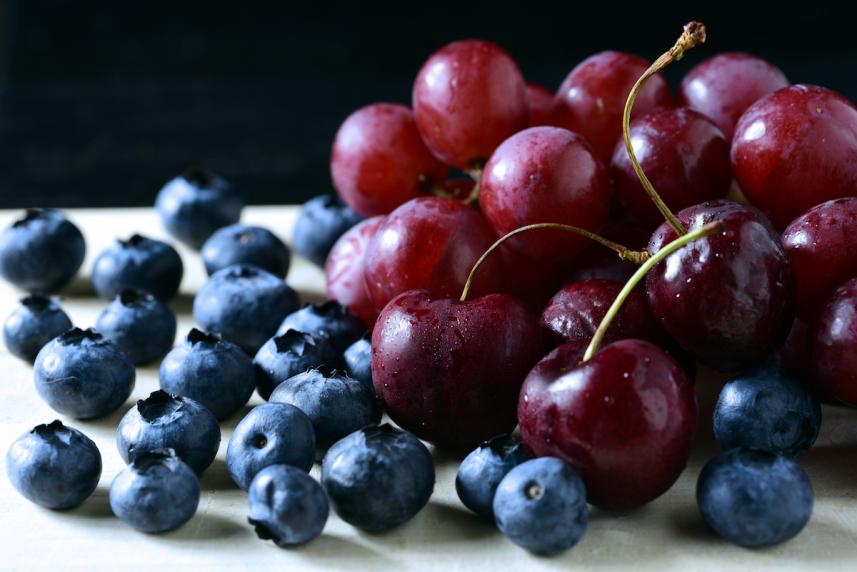The best foods for arthritis
A dozen tasty choices that can make a big difference.

Aging is inevitable, but living with joint pain isn’t. The fact is, more than 50 million adults in the U.S. live with arthritis—defined as a painful inflammation or stiffness of the joints, according to the Arthritis Foundation. Osteoarthritis is the most common type, occurring when cartilage, the cushiony surface that protects the ends of our bones, deteriorates over time, and bones begin rubbing against each other, causing pain. And the “osteo” type most often affects seniors, who’ve simply had more time for that cartilage to wear down. Among people 65 or older, about half (49.6 percent) report doctor-diagnosed arthritis, according to the Centers for Disease Control and Prevention.
The good news? You can do something about it. Lifestyle factors—stress, sleep, exercise, and diet—can help you manage discomfort. “Changing your diet to focus on whole, unprocessed, real foods, staying hydrated, and sleeping at least eight hours a night will help with symptoms,” advises nutritional therapist and wellness coach Alyssa Abrahamson, MA, NTP, who herself lives with rheumatoid arthritis (an autoimmune disease in which the immune system attacks the joints). “Certain foods can trigger inflammation,” which can lead to painful flare-ups.
Abrahamson focuses on “organic vegetables and fruit, high-quality animal protein such as grass-fed beef, wild-caught fish, and pastured eggs and poultry, plus water.” Aim to drink at least half your body weight, in ounces, of water a day.
Eat This
Here are 12 foods you can start integrating into your diet today to reduce inflammation and promote joint health, according to the Arthritis Foundation and Cleveland Clinic:
Nuts: High in fiber and vitamins, they provide a lower-saturated-fat alternative to red meat.
Garlic: Essential to many cuisines, garlic also contains a compound that may limit cartilage damage.
Whole grains: Especially bulgur and quinoa. They lower the body’s level of CR-protein, a marker of inflammation.
Ginger and turmeric: Strong antioxidants, both are also anti-inflammatory.
Fatty fish: Salmon, sardines, and mackerel are rich in omega-3s and can reduce inflammation.
Berries: They’re high in antioxidants and fiber—and they’re delicious.
Cherries: Also full of vitamins, they have an anti-inflammatory effect.
Broccoli: Packed with vitamins, it also has been shown to slow the progression of osteoarthritis.
Olive oil: It’s high in omega-3, omega-6, and essential fatty acids, and is anti-inflammatory.
Dairy: In small doses, low-fat milk, cheese, and yogurt, packed with calcium and vitamin D, boosts bone strength.
Green tea: It’s high in antioxidants and nutrients, and it reduces inflammation.
Dark chocolate: Yep, it’s a health food (in small one-ounce servings), if it has at least 60 percent cacao; it eases inflammation.
When Pain Comes
If you’re experiencing flare-ups, Abrahamson recommends keeping a “Food, Mood, Poop, and Sleep Journal” for a few weeks to observe your body’s patterns and what lifestyle elements might be at play.
Once you’ve tracked how your dietary intake and lifestyle factors may influence your physical symptoms, you can start to identify triggers that you can then manage. “Eliminate certain foods that you suspect are inflammatory triggers for at least 30 days,” Abrahamson says, then “reintroduce one food at a time and wait at least five days to see if there are any symptoms, which can range from digestive issues to insomnia and eczema to a full-blown flare-up. Once you know what triggers you, it makes it much easier to eliminate.”
And most importantly, Abrahamson says, “Listen to your body. Your body has an innate intelligence and knows how to heal itself. Flare-ups and symptoms are your body’s way of communicating with you. Listen and be gentle with yourself as you learn about how your body reacts to different factors and what you can do to help support your health.”


